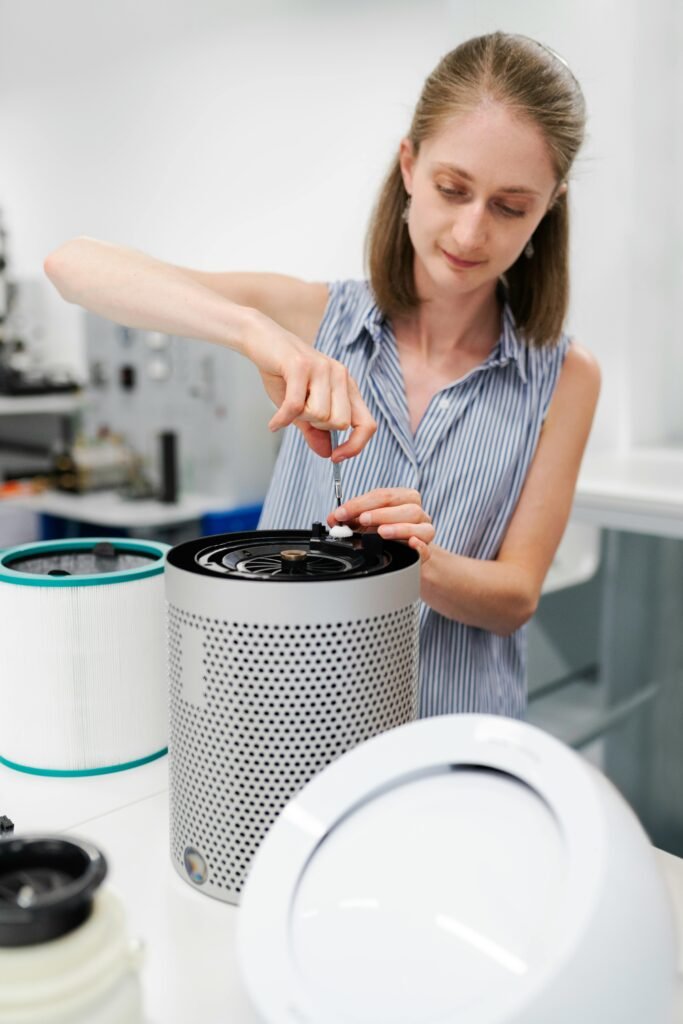
Have you ever wondered what’s going on with the air you’re breathing? We care about food labels and drinking clean water, but what about the invisible things that fill our lungs every moment? A few months ago, we heard a lot about air quality monitors — little gadgets that measure how clean or polluted the air is around us. It seemed well, particularly to anyone on this planet who has to live in a city, with the traffic and construction and smog that entails. But a thought popped up: Do these air quality monitors work, or are they just fancy gadgets?
That question led me down a rabbit hole of research, reviews, and real-life testing. Here’s what I found—from one curious person to another.
Starting with the basics, Air quality monitors, or AQMs, are devices designed to measure what’s in the air. Not just oxygen or carbon dioxide, but pollutants like dust (PM2.5 and PM10), carbon monoxide, volatile organic compounds (VOCs), and even humidity or temperature.
One can find such monitors in all shapes and sizes. Some are small and portable, perfect for the bedroom or car. Others are big and built for industrial spaces. These days, you can even find them built into smart home systems. The idea is simple: know what you’re breathing in, so you can do something about it if needed.
Starting with the basics, Air quality monitors, or AQMs, are devices designed to measure what’s in the air. Not just oxygen or carbon dioxide, but pollutants like dust (PM2.5 and PM10), carbon monoxide, volatile organic compounds (VOCs), and even humidity or temperature.
One can find such monitors in all shapes and sizes. Some are small and portable, perfect for the bedroom or car. Others are big and built for industrial spaces. These days, you can even find them built into smart home systems. The idea is simple: know what you’re breathing in, so you can do something about it if needed.
Most air quality monitors use tiny sensors, each designed to detect a specific particle or gas.
Once the device collects this data, it usually displays the results in a number format (like an Air Quality Index or AQI score), or through colored indicators—green for good, red for bad, and so on. Many also sync with mobile apps, which is super handy.
In my case, I bought a popular mid-range monitor for home use. It claimed to track PM2.5, VOCs, CO2, and humidity. Within minutes of turning it on, I had a bunch of numbers staring back at me. But then came the next big question.
To see how accurate these things are, these devices were compared with official government air quality reports and professional-grade monitors used in labs. The result? Pretty close—but not perfect.
For PM2.5 levels, the device often matched within 5-10 points of official outdoor monitors. That’s not bad, considering those government machines cost thousands. Indoors, it showed spikes whenever we cooked, lit candles, or vacuumed without a filter. That felt real, especially when a slight smell or stuffiness at the same time was noticed.
However, VOC readings were more up and down. One day, it showed high levels, even though nothing unusual was happening. Then we opened a new plastic package—and bam, the number shot up again. So, while VOC sensors do react, they’re often not as precise. Some cheaper models are even more unpredictable in this area.
And carbon dioxide? That one was surprisingly helpful. When windows were closed for a long time, CO2 levels slowly climbed. After just ten minutes of opening a window, the number dropped again. It made us open the windows more often—something we hadn’t done much before.
The bottom line is: they give you a good sense of air quality trends, but they aren’t perfect down to the last particle. Environmental factors, sensor type, and even the room layout can affect results.
From a curious user’s point of view—yes, but with realistic expectations.
Air quality monitors won’t solve pollution. They won’t give you lab-level accuracy. But what they do offer is awareness. And that matters. Because once you start seeing what’s in your air, you start changing your habits. You open windows more often. You use air purifiers at the right times. You might even think twice about lighting that scented candle.
They’re especially helpful if you live near traffic, suffer from allergies, or spend a lot of time indoors (which, let’s face it, most of us do).
Would I recommend one? If you’re even a little curious about your environment. But don’t get obsessed with every number. Use it as a guide, not a panic button.
Do air quality monitors work? In my experience, yes, for what they’re built to do. They help you understand your surroundings a bit better. They make the invisible visible. And sometimes, that’s all you need to breathe a little easier.
Curious to see what’s in the air around you? Maybe it’s time to check it out for yourself.